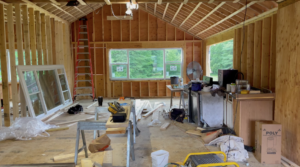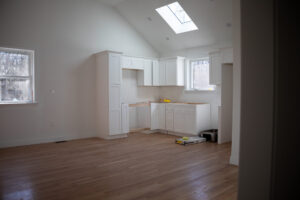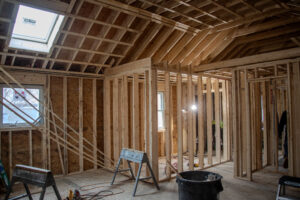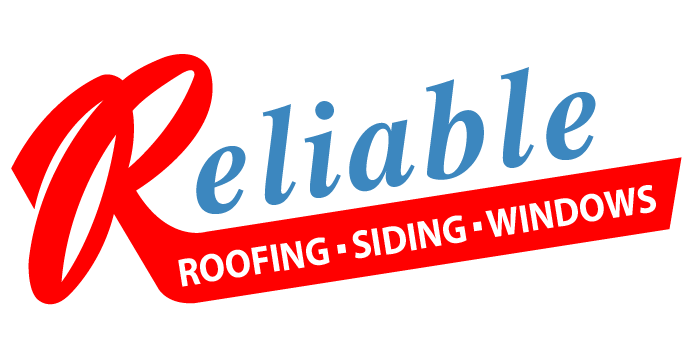Understanding Home Additions
When you need more space or want to increase your home’s value, home additions are a smart path to consider. Whether it’s a sprawling second-story expansion, a cozy sunroom addition, or a practical mudroom, each addition serves a unique purpose. This guide is your starting point to understanding the essentials of home improvements, renovations, and expansions.
Home additions come in all shapes and sizes, designed to meet a wide variety of needs. Home improvement might mean adding a luxurious master suite for enhanced comfort and privacy. Renovation could involve transforming your basement into a lively entertainment area. And expanding living space? It might be as simple as extending your kitchen to make room for family gatherings.
Quick Takeaways:
- Home additions can significantly increase livable space and property value.
- Choices include building up (adding stories) or out (expanding the ground floor).
- Renovations can also encompass improvements to kitchens, bathrooms, and more, enhancing functionality and aesthetics.
Getting it right means careful planning, understanding local zoning laws, and deciding between DIY or hiring professionals. Each decision impacts the total cost, timeline, and outcome of your project.
Whether you’re a residential homeowner or a commercial property owner, embarking on a home addition project is a major decision. The journey to expand your living space can be complex but deeply rewarding. With this guide, we aim to simplify the process, making your dream addition a reality.
Deciding Between Building Up or Out
When it comes to home additions, one of the first decisions you’ll face is whether to build up or build out. This choice affects not just the project’s cost, but also its duration, complexity, and impact on your daily life during construction. Let’s break down the key factors: cost comparison, foundation expenses, roofing, and framing, to help you make an informed decision.
Cost Comparison
Building out typically involves expanding the ground floor of your home. This often means extending the foundation and roof, which can be costly. However, it usually allows you to stay in your home during construction.
On the other hand, building up—such as adding a second story—might avoid the need for a new foundation, potentially saving money. But, it can be more disruptive, as it often requires significant structural work to your existing home, including removing and replacing the roof.
Foundation Expenses
The foundation is a major cost factor in any build-out project. Extending your home’s footprint requires excavating, pouring new foundation walls, and potentially updating drainage systems—all of which add up.
Building up can sidestep these costs since you’re utilizing the existing foundation. However, you’ll need to ensure the current foundation can support the additional weight, which may require some reinforcement.
Roofing
Adding a new level means removing your existing roof and constructing a new one above the addition. This can be a significant expense, but it’s often less than the cost of laying a new foundation for a build-out. For build-outs, extending the roofline to cover the new space is necessary, which might involve complex design and construction challenges.
Framing
Framing costs can vary significantly between building up and out. Building out usually requires less structural reinforcement, making it potentially cheaper in terms of raw materials. However, building up often involves reinforcing the existing structure to support the new addition, which can increase labor costs even if the material costs are lower.
Making the Decision
The decision to build up or out depends on several factors specific to your project, such as:
- Your budget: Building up can be cheaper in terms of foundation work but more expensive due to the need for structural reinforcement.
- Your property: If you have limited land, building up might be your only option.
- Local zoning laws: Some areas have restrictions on how close you can build to property lines, which might limit your ability to build out.
- Your lifestyle: Building out might allow you to stay in your home during construction, whereas building up could require you to move out temporarily.
By considering these factors and consulting with a professional builder or architect, you can make an informed decision that aligns with your goals, budget, and lifestyle. Whether you choose to build up or out, the key to a successful home addition project is thorough planning and execution.
In the next section, we’ll explore popular home addition ideas to inspire your project and help you maximize your home’s potential.

Popular Home Addition Ideas
When it comes to expanding your living space, the possibilities are as varied as homeowners’ needs and dreams. Let’s dive into some of the most sought-after home addition ideas that can transform your home and lifestyle.
Second Story
Adding a second story can dramatically change your home’s profile, doubling your living space without eating into your yard. It’s perfect for growing families or adding luxury spaces like a master suite. This will involve significant structural work, including possibly reinforcing the existing foundation.
Over Garage
Utilizing the space above your garage is a clever way to add a home office, guest suite, or playroom without altering the footprint of your home. This type of addition can be particularly seamless if your garage is attached, offering a straightforward way to expand.
Modular Addition
For those looking for a less invasive option, modular additions are pre-fabricated rooms or sections of a house that are constructed off-site and then attached to your home. This can significantly reduce construction time and disruption to your daily life.
Sunroom
Sunrooms are a fantastic way to bring the outdoors in, providing a bright space for relaxation or plants. They can be three-season (not heated) or four-season (heated) and offer a significant boost to your home’s aesthetic appeal.
Basement Finishing
Turning your unfinished basement into a livable space is a cost-effective way to add square footage. Whether it’s a family room, home gym, or an extra bedroom, a finished basement adds valuable space that’s cool in summer and warm in winter.
Kitchen Extension
Expanding your kitchen not only gives you more room to cook and entertain but also significantly increases your home’s value. A larger kitchen can accommodate an island, more storage, and state-of-the-art appliances.
Bathroom Addition
Adding a bathroom can alleviate family bottlenecks in the morning and improve your home’s functionality. Whether it’s a small half-bath or a luxurious en-suite, a new bathroom is always a smart investment.
Mudroom Construction
A mudroom acts as a transition space where your family can store shoes, coats, and backpacks, keeping the rest of your home cleaner and more organized. It’s especially beneficial in regions with harsh weather.
Each of these additions has its own set of benefits and considerations. For example, a second story might be a more substantial investment but can offer unmatched views and separation from the living areas below. An over garage addition leverages existing structures for a potentially more cost-effective expansion. Modular additions can offer a quicker, sometimes more affordable path to extra space, while sunrooms bring a unique charm and connection to the outdoors.
Basement finishing is often the most budget-friendly way to add usable square footage, whereas kitchen and bathroom additions are among the most desirable features for boosting home value. Lastly, the practicality of a mudroom cannot be overstated, providing a dedicated space to manage outdoor gear and keep your home clean.
Remember that the success of your home addition project hinges on careful planning, adherence to local zoning and building codes, and selecting the right contractor. In the next section, we’ll delve into the cost factors associated with home additions, helping you budget and plan effectively for your project.
Cost Factors in Home Additions
When planning a home addition, understanding the costs involved is crucial. Let’s break down the key factors that will impact your budget: project size, location, labor, materials, permits, zoning laws, and site preparation.
Project Size
The bigger the addition, the higher the cost. It’s straightforward: more square footage requires more materials, more labor, and potentially more complex design and engineering work. Whether you’re adding a small sunroom or doubling your home’s size, the project’s scale will directly influence your budget.
Location
Where you live can significantly affect the cost of home additions. Labor rates, the cost of materials, and even permit fees can vary widely from one region to another. For example, adding a room in a major city where living costs are high will likely be more expensive than in a rural area.
Labor
Labor costs can account for a significant portion of your project’s budget. Rates vary by profession and region. As our research shows, you might pay anywhere from $40 to $200 per hour for skilled labor like electricians, plumbers, and carpenters. The complexity of your addition can also affect labor costs; specialized work requires skilled professionals who may command higher rates.
Materials
The quality and type of materials you choose will impact your overall costs. Opting for high-end finishes or rare materials can quickly inflate your budget. Prices for common building materials like lumber can fluctuate based on market conditions, so it’s wise to budget a little extra to account for unexpected price increases.
Permits
Before starting your project, you’ll need the right permits, which can cost anywhere from $200 to $3,000. The price depends on the project’s scope and your location. Skipping this step can lead to fines and complications, so always include permit costs in your budget.
Zoning Laws
Your local zoning laws can affect where and what you can build. For instance, there might be restrictions on how close you can build to property lines or how high your addition can be. Familiarize yourself with these regulations early on, as they can influence your project’s design and cost.
Site Preparation
Preparing your site for construction can include clearing land, excavating, and laying foundations. Costs vary widely, typically ranging from $1,500 to $5,000, depending on the land’s condition and the project’s size. Don’t overlook this essential step in your budgeting process.
In summary, many factors contribute to the cost of home additions. By understanding and planning for these expenses, you can set a realistic budget for your project. While it’s tempting to cut corners to save money, investing in quality labor and materials can save you from costly repairs and upgrades down the line. In our next section, we’ll explore how to plan and execute your home addition project, ensuring a smooth process from start to finish.

Planning and Executing Your Home Addition
When you’re ready to expand your living space with a home addition, careful planning and execution are key to ensuring the project goes smoothly and meets your expectations. Let’s dive into the essential steps you’ll need to take, from consulting with a builder to reporting your new addition to the county assessor.
Consulting a Builder
First things first, consult with a professional builder. This is a crucial step in the planning process. A skilled builder can provide valuable insights into the feasibility of your project, estimated costs, and potential challenges. They can also help you understand how your ideas can be transformed into reality while adhering to your budget and timeline.
Understanding Local Zoning Ordinances
Before moving forward with your home addition, understand the local zoning ordinances in your area. Zoning laws can affect the size, height, and placement of your addition. Checking with your local planning department will help you avoid any legal issues and ensure your project complies with all regulations.
Complying with Building Codes
Similarly, building codes play a significant role in how your addition must be constructed. These codes cover everything from structural integrity to fire safety and electrical systems. Your builder should be familiar with the latest building codes, but it’s a good idea for you to have a basic understanding as well. This knowledge will help you ensure that your addition is not only safe but also up to current standards.
Preparing Blueprints and Plans
With a clear understanding of zoning ordinances and building codes, the next step is to prepare detailed blueprints and plans for your addition. These plans should include architectural drawings, floor plans, and any other necessary documentation. Working with an architect or a designer can help you translate your vision into a plan that meets all legal requirements and aligns with your aesthetic preferences.
Reporting to County Assessor
Once your home addition is complete, it’s important to report the changes to your county assessor. This step is often overlooked but is crucial for ensuring that your property records are up to date. Reporting your addition can affect your property taxes, as the added square footage may increase your home’s assessed value. Make sure to provide all required documentation, including permits and final inspection approvals.
By following these steps, you can navigate the complexities of planning and executing a home addition. The success of your project depends on thorough preparation, understanding local regulations, and working with experienced professionals. With careful planning and execution, your home addition can enhance your living space and increase the value of your property.
Maximizing Return on Investment
When you’re thinking about home additions, it’s not just about the extra space. It’s also about making smart choices that increase your home’s value. Let’s dive into how you can get the most bang for your buck.
Kitchen Remodels
A kitchen is often called the heart of the home. So, it’s no surprise that kitchen remodels are at the top of the list for adding value. Simple updates like new countertops, cabinets, and efficient appliances can make a big difference. A modern and functional kitchen appeals to homebuyers, potentially offering a return of 60% or more on your investment.
Bathroom Expansions
Next up, bathroom expansions. Whether it’s turning a half bath into a full or adding luxury features to your master bath, bathroom updates are a close second to kitchens in terms of return on investment. A well-designed bathroom can recoup around 50% of your costs. Think about adding dual sinks, a walk-in shower, or a soaking tub to make the space more appealing and functional.
Adding Bedrooms
More bedrooms mean accommodating larger families or having extra space for a home office. Adding bedrooms can significantly increase your home’s appeal and market value. The key here is to balance the number of bedrooms with the existing living spaces and bathrooms. A home with too many bedrooms and not enough common area or bathroom space can actually deter buyers.
Second-Story Additions
Second-story additions can dramatically increase your living space without expanding the house’s footprint, which is especially valuable in areas where land is at a premium. This type of addition can offer a substantial return, but it’s also one of the more costly and complex projects. Proper planning and execution are crucial to ensure it blends seamlessly with the rest of your home.
Living Room Extensions
Finally, living room extensions. Expanding your living area can make your home more attractive to potential buyers by offering more space for entertainment and relaxation. Whether it’s extending the room outward or knocking down walls to create an open floor plan, these additions can make your home feel more spacious and inviting.
In conclusion, while home additions require a significant investment, choosing the right projects can enhance your daily living experience and increase your home’s resale value. Kitchen remodels, bathroom expansions, adding bedrooms, second-story additions, and living room extensions are all smart ways to maximize your return on investment. Just remember, the success of these projects depends on careful planning, understanding your local market, and working with experienced professionals to bring your vision to life. With the right approach, your home addition can be both a valuable enhancement to your lifestyle and a wise financial decision.

Frequently Asked Questions about Home Additions
When considering expanding your living space, you’re bound to have questions. Let’s dive into some of the most common queries about home additions, breaking down the complexities into simple, understandable answers.
Is it cheaper to add on or build up?
The Short Answer: It depends.
The Longer Explanation: Adding on—meaning expanding your house’s footprint on your property—often involves foundation work, which can be costly. Building up, such as adding a second story, avoids the cost of new foundation but may require strengthening the existing foundation and structure to support the additional weight. Plus, building up might save your yard space.
Key Takeaway: Both options have their costs. Adding on requires more land and foundation work. Building up needs structural reinforcement. The best choice depends on your property, budget, and needs.
What is the best addition to a house?
The Short Answer: It varies by homeowner and property.
The Longer Explanation: The “best” addition aligns with your lifestyle needs and enhances your property value. Kitchen remodels and bathroom expansions are popular for their high return on investment. Adding bedrooms can significantly increase a home’s market value, especially in family-friendly neighborhoods.
Key Takeaway: Consider what your home lacks, what you need more of (space, bedrooms, bathrooms?), and what future buyers might find appealing.
How much does it cost to add 1000 square feet to a house?
The Short Answer: A broad range, but expect tens of thousands of dollars.
The Longer Explanation: The cost of adding 1000 square feet to your house can vary widely based on factors like location, materials, labor costs, and the type of addition (e.g., simple living space vs. kitchen or bathroom). Nationally, costs might range anywhere from $50,000 to over $200,000. The complexity of the design, the quality of materials, and the need for plumbing or electrical work can all significantly impact the final price.
Key Takeaway: Budget carefully and get multiple quotes. Remember to include a buffer for unexpected costs.
In conclusion, home additions are a significant investment in your property and lifestyle. Whether you’re adding up or out, focusing on kitchens and bathrooms, or adding much-needed living space, it’s crucial to plan carefully. Consult with professionals, consider your long-term needs, and prepare for a mix of excitement and disruption as your home transforms. With the right approach, your addition can enhance your daily life and increase your home’s value for years to come.
Let’s move on to discuss how to ensure your home addition project runs smoothly from start to finish.
Conclusion
Embarking on a home addition project is a significant step towards enhancing your living space and boosting the value of your home. It’s a journey that requires careful planning, a clear vision, and a partnership with a contractor you can trust. That’s where we, at Reliable Roofing, come into the picture.
We understand that home additions are more than just construction projects; they are dreams being built. Our commitment to excellence, attention to detail, and dedication to customer satisfaction set us apart. Whether you’re looking to add a sunroom with a view, a cozy new bedroom, or a spacious kitchen, we have the expertise to bring your vision to life.
Why Choose Reliable Roofing?
- Experience and Expertise: Our team has the skills and knowledge to tackle any home addition project, ensuring that your vision becomes a reality.
- Quality and Durability: We use only high-quality materials and employ the latest construction techniques to ensure your addition is built to last.
- Customer-Centric Approach: Your satisfaction is our top priority. We work closely with you throughout the project to ensure the outcome exceeds your expectations.
- Transparency and Trust: We believe in honest communication and provide transparency at every project stage, ensuring a smooth and stress-free experience.
- Licensed and Insured: With Reliable Roofing, you can have peace of mind knowing that your project is in safe hands.
Your home is a reflection of your unique style and a sanctuary for your family. It’s where memories are made and cherished. At Reliable Roofing, we’re honored to help you enhance your home and enrich your life through our dedicated home addition services.
Ready to transform your vision into reality? Discover how Reliable can help with your home addition project.
In conclusion, the journey from vision to reality in home addition projects is an exciting but intricate process that requires careful planning, skilled execution, and a trusted partner. Reliable Roofing is here to ensure that your home addition not only meets but exceeds your expectations, enhancing both your home’s value and your quality of life. Let’s make your dream home a reality together.



